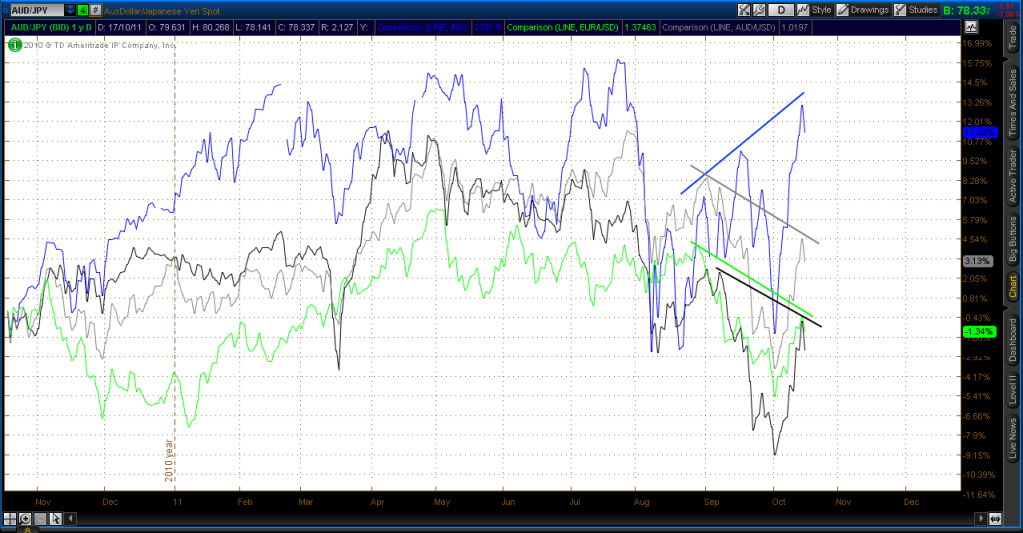
It betrayed further downside, and that's exactly what happened.
E-Mini NASDAQ with October 17th marked;
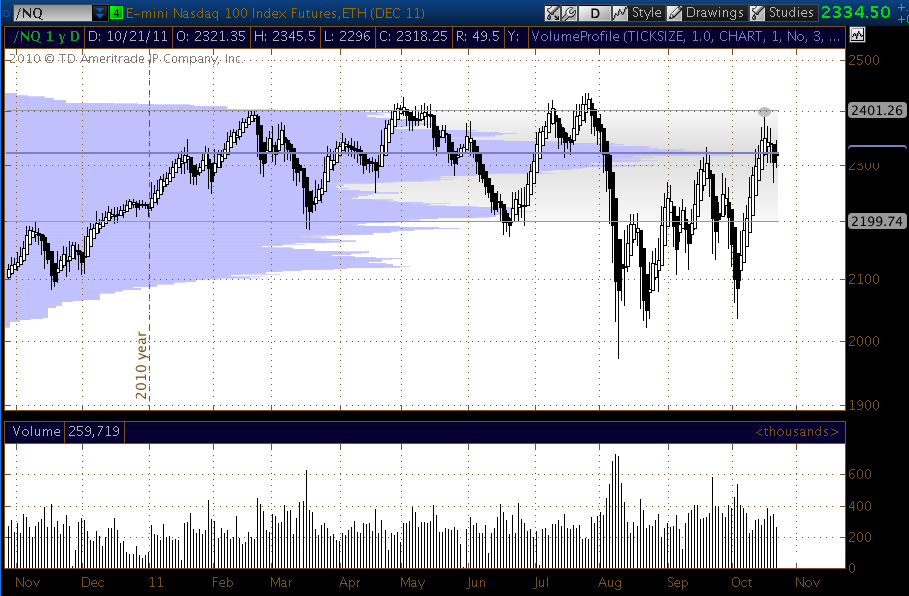
I've been looking back to my trading results from March 1st until August 8th when I had to stop as ThinkorSwim ceased operations in the UK.
Some charts follow showing different aspects of my trading, and the system I use;
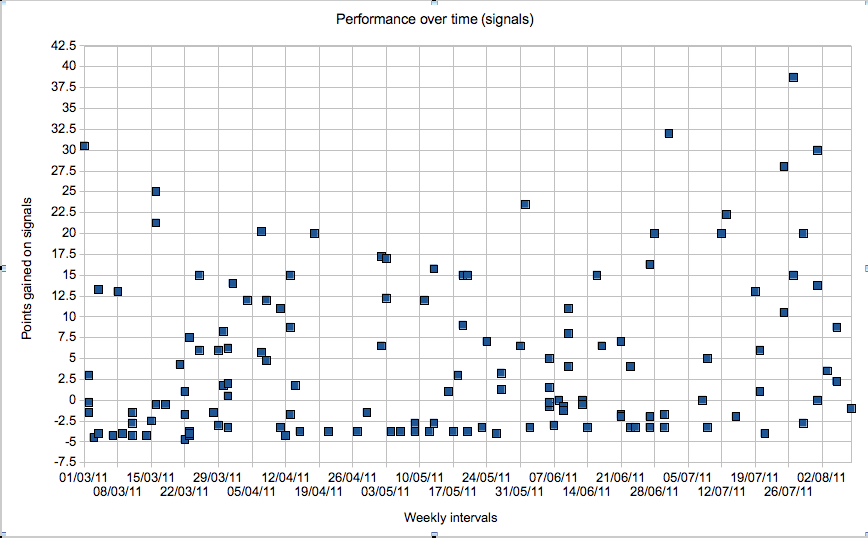
This shows the the potential amount of points available to gain/lose for each signal on my system from 1st March to August 8th. An even spread with an upswing towards the end, potentially as a result of switching my indicator to futures based data.
This next one shows, from those signals generated, the actual trades I took;
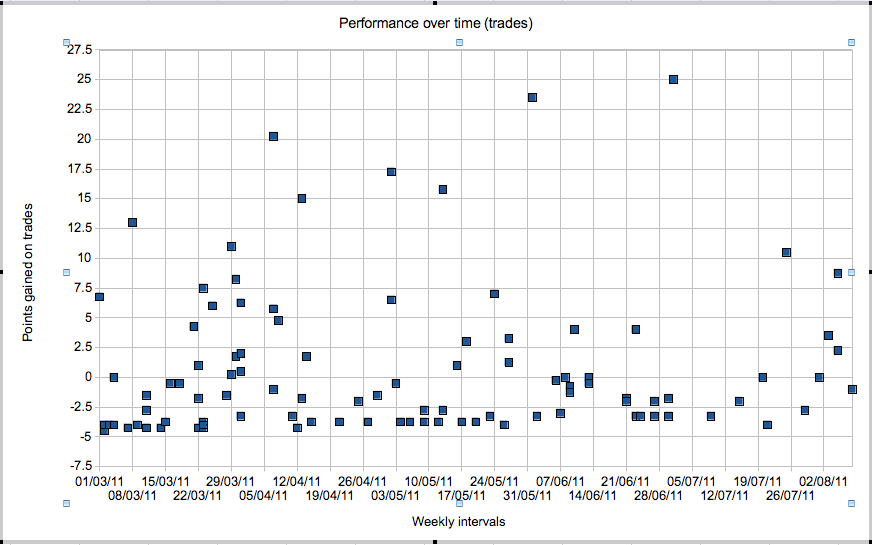
I missed some of the good ones during times when I was unavailable to trade, and sometimes as a result of taking breaks from the screen.
This next one shows all of the actual signals generated, but in the context of the time in the trading day when they were generated, and the potential gain available per signal;

Clearly the best times to trade are the first two hours of the trading session and the meat of the afternoon session, prior to the close. Fewer signals during the quieter lunchtime period.
Although signals generated in the first two hours of trade generally led to potentially higher gains than the later session, signals were more likely to be stopped out, so signals in the latter half of the trading day had a higher probability of success and a lower probability of a large gain.
Next is the actual trades taken by time of day initiated and points gained;
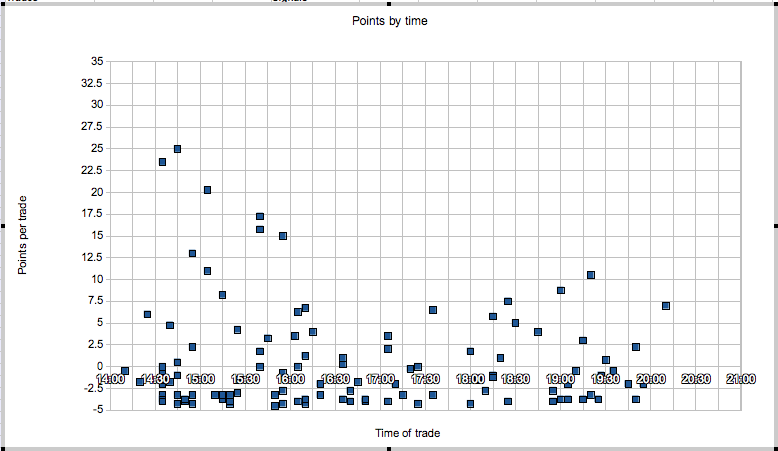
There is a cluster of trades stopped out in the first hour. Trades initiated after the first hour were, relatively speaking, more likely to succeed.
This next one shows length of time in trades, put together as a result of a suggestion from a Jeff Quinto video. The longest was 4 hours 48 minutes;
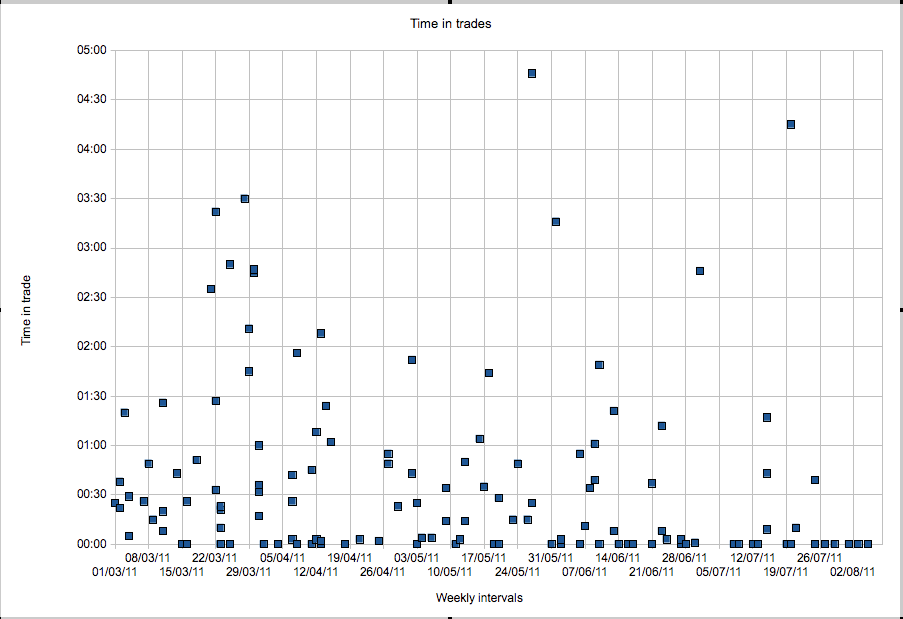
Next is time in trades by points gained;
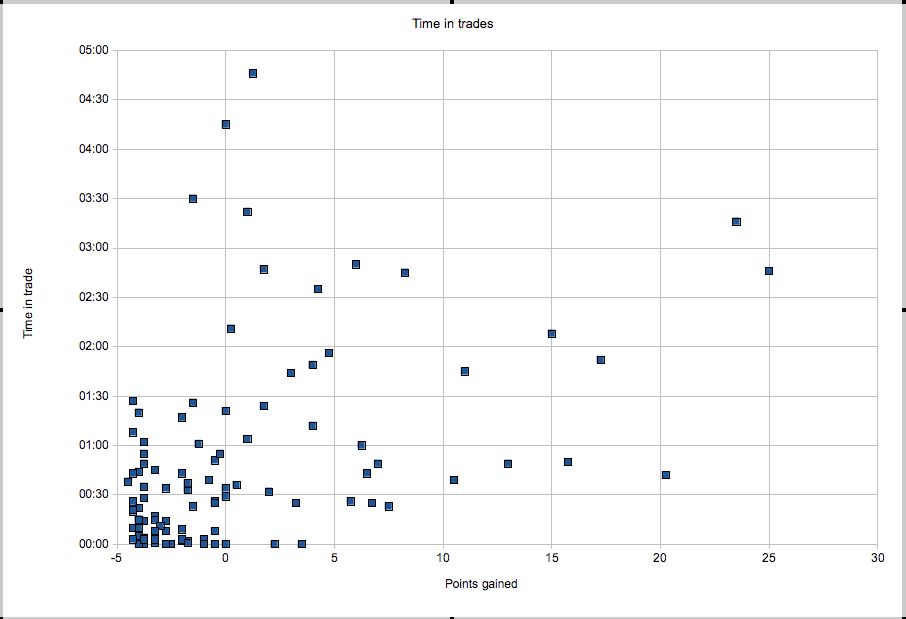
Clearly if a trade isn't working after a lengthy period, it's better to close it, rather than leave it running.
I'm still ongoing with my analysis of my indicator performance with Multicharts. I had thought that an ideal scenario would be one where I have some code written (or purchased) that will auto detect the type of chart patterns I like to trade. That said, it's unlikely to be as good as the brain at detection. There's some clear evidence of this in a project Miss PositiveDeviant is taking part in called PlanetHunters http://www.planethunters.org/. Essentially what NASA have done is provide a lot of potential planet transit data online, for "community scientists" to search through in order to look for patterns that are typical of a planet transit in front of a star. The reason they did this is because they recognise that the human mind is better at pattern detection than computers are. Miss Positive Deviant actually found a new planet and this was confirmed by the project team, she was then interviewed by some of the people involved in the project at MIT, Yale and Oxford and her name is actually listed in the scientific journal and some other articles online. Unsurprisingly, she doesn't get to name it.
The next chart is, on the left, my performance, and on the right, the performance of the system, that is the results had all of the signals been traded;
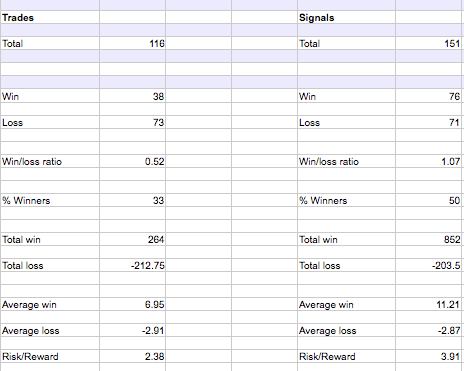
This really shows exactly what happens if you take a system and only trade some of the signals. The performance is dramatically different. Although I made a profit over the period, it's nothing compared to the potential that is there. I guess X% of new futures traders are down at the six month point, not up as I am. But I take little comfort in that since I want to be much closer to the right, than the left. It is somewhat curious that some of the trades I missed were big ones, and since the system takes most of the profits from a few big trades, that really hurts the profitability.
An analogy of futures trading is a Formula 1 racing team;
The car has to be well designed
The car has to be well set up for the track
The car has to be reliable
The car has to be consistent
The mechanics need to be experts in their field
The team needs strong leadership for motivation
The driver needs to be fit
The driver needs to be motivated
The driver needs to know the track well
The driver needs to be very competitive
If any one of these aspects falters then it strongly impacts the result.
No comments:
Post a Comment